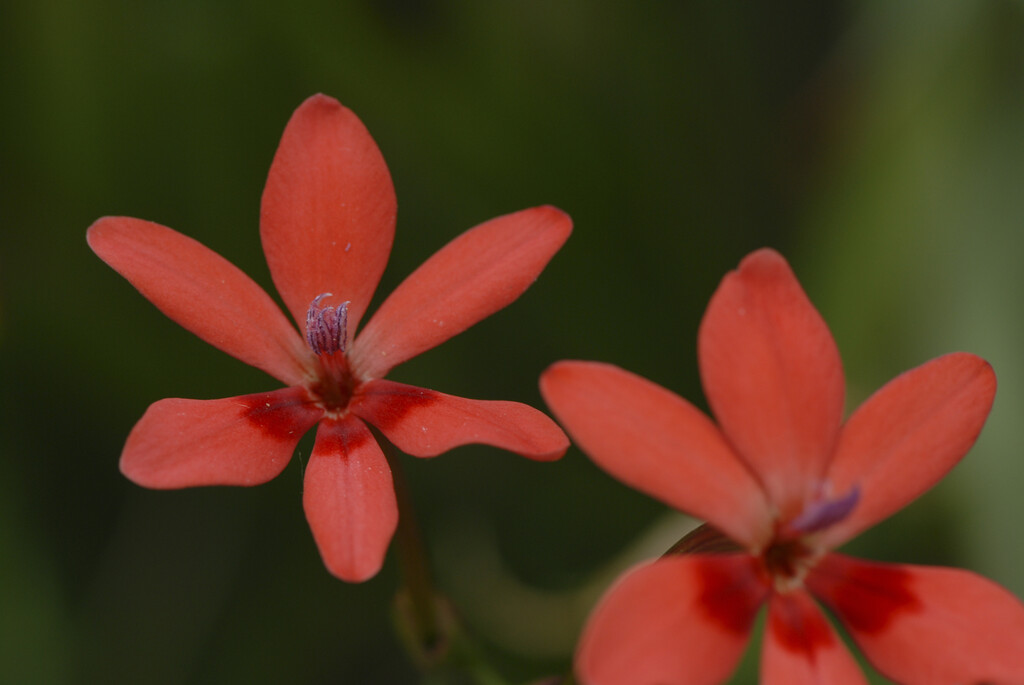Freesia laxa
flowering grass
A slender perennial growing from a small corm, with erect, sword-like leaves and, in early summer, sprays of salmon-red flowers with darker spots on the lower 3 petals
Size
Ultimate height
0.1–0.5 metresTime to ultimate height
1–2 yearsUltimate spread
0–0.1 metreGrowing conditions
Moisture
Well–drainedpH
Acid, NeutralColour & scent
| Stem | Flower | Foliage | Fruit | |
| Spring | ||||
|---|---|---|---|---|
| Summer | Red | Green | ||
| Autumn | ||||
| Winter |
Position
- Full sun
Aspect
South–facing
Exposure
Sheltered Hardiness
H3Botanical details
- Family
- Iridaceae
- Native to GB / Ireland
- No
- Foliage
- Deciduous
- Habit
- Columnar upright
- Genus
Freesia are cormous deciduous perennials with erect, linear to narrowly lance-shaped leaves and upright stems bearing terminal racemes of slender-tubed, salver-shaped or trumpet-shaped flowers that are usually scented
- Name status
Correct
- Plant range
- Kenya to South Africa
How to grow
Cultivation
Plant corms in spring 5cm deep (2in) in full light. In the growing season, water moderately and apply a balanced liquid fertiliser monthly. When dormant, the corms need to be kept completely dry
Propagation
Propagate by seed at 13-16°C (55-61°F) in spring. Can also be propagated by division in spring and the seedlings should flower after two years
Suggested planting locations and garden types
- Cottage and informal garden
- City and courtyard gardens
- Coastal
- Gravel garden
- Flower borders and beds
- Wall side borders
Pruning
No pruning required
Pests
Generally pest-free
Diseases
Generally disease-free
Love gardening
Sign up to receive regular gardening tips, inspiration, offers and more
View our Privacy Policy
Get involved
The Royal Horticultural Society is the UK’s leading gardening charity. We aim to enrich everyone’s life through plants, and make the UK a greener and more beautiful place.

